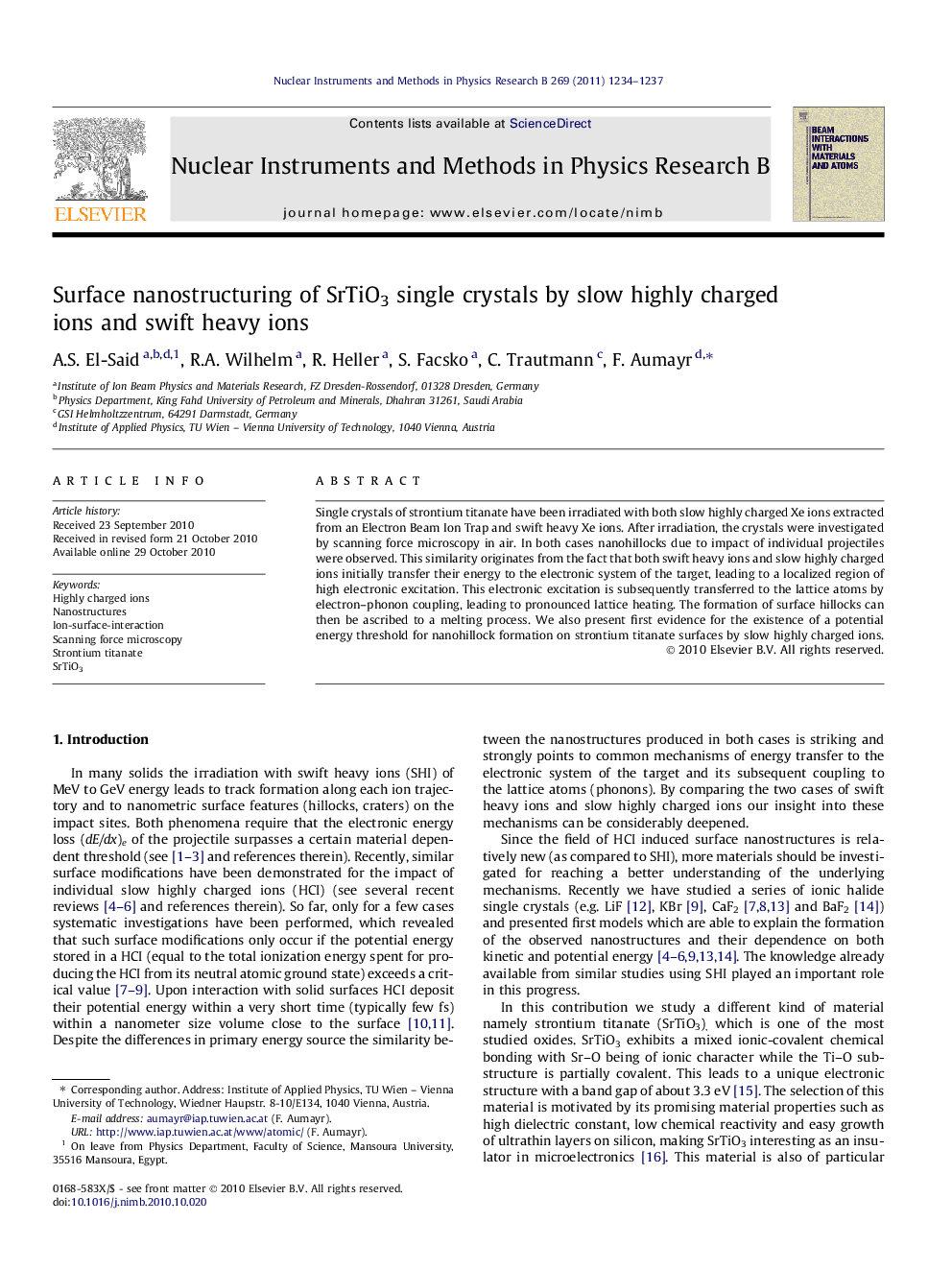| Article ID | Journal | Published Year | Pages | File Type |
|---|---|---|---|---|
| 1683131 | Nuclear Instruments and Methods in Physics Research Section B: Beam Interactions with Materials and Atoms | 2011 | 4 Pages |
Single crystals of strontium titanate have been irradiated with both slow highly charged Xe ions extracted from an Electron Beam Ion Trap and swift heavy Xe ions. After irradiation, the crystals were investigated by scanning force microscopy in air. In both cases nanohillocks due to impact of individual projectiles were observed. This similarity originates from the fact that both swift heavy ions and slow highly charged ions initially transfer their energy to the electronic system of the target, leading to a localized region of high electronic excitation. This electronic excitation is subsequently transferred to the lattice atoms by electron–phonon coupling, leading to pronounced lattice heating. The formation of surface hillocks can then be ascribed to a melting process. We also present first evidence for the existence of a potential energy threshold for nanohillock formation on strontium titanate surfaces by slow highly charged ions.
